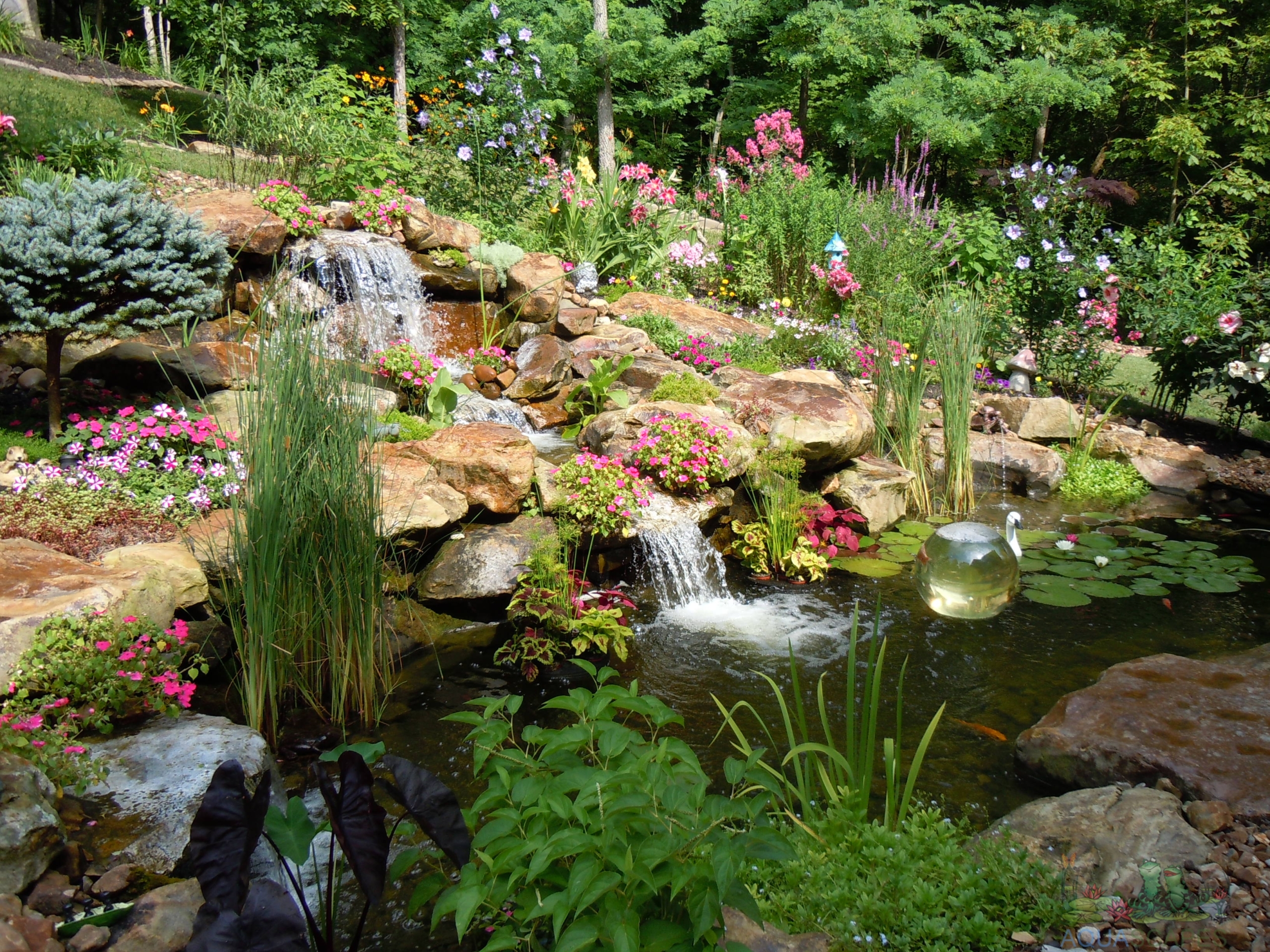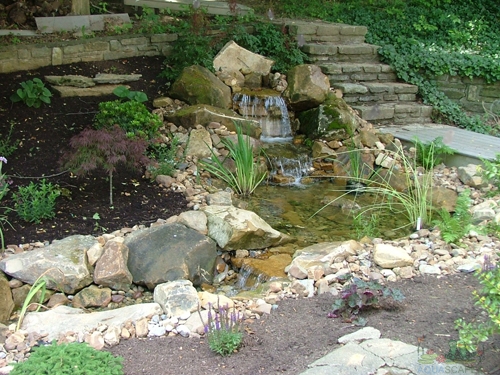How to Shock a Pond Quick How-To Guide
If fish are dying in your pond or if you see lots of algae, it may be time to shock the pond to clean it up. Algae needs oxygen to grow, just as fish and aquatic vegetation do. However, too much algae can rob fish and plants of the oxygen they need. Shocking your pond and getting rid of the harmful algae can restore the clean, clear look to you pond. Because desirable plants and animals live in ponds, owners look for natural enzymes and organic compounds to clear the water. Chlorine should only be used as a last resort.
Remove all dead or decaying plant and animal life from the pond. Algae feeds on the decay process.
Place the correct amount of algaecide in your pond according to manufacturer’s directions. For example, if you have a 120-gallon pond, you would need to use 2 teaspoons of general Algaecide. Each algaecide is different, so read the directions closely.
Let the pond pump aerate and spread the algaecide. If algae is still present after a week, shock the pond again.
Best Rocks for a Pond Installation
When selecting rocks for use around the pond, it’s important to pick options that are sturdy, durable, and non-toxic.
Importance of Spring Cleaning your Water Garden
When the flowers bloom and birds start singing, spring is in full swing. The promise of good weather brings us outdoors to enjoy nature’s beauty and witness its blossoming rebirth; but have you considered just how important a role your water garden plays in this seasonal process?
How to Install a Homemade Pond Waterfall Guide
How to Install a Homemade Pond Waterfall Guide
Have you ever imagined listening to the tranquil sound of trickling water in your own backyard? Installing a pond waterfall can be an excellent way to create a calming outdoor space for you and your family. Not only will a backyard pond set the scene for relaxation, but it can also increase property value and improve curb appeal. Luckily, installing one isn’t as hard as it may seem! In this blog post, we’ll provide an ultimate guide for adding a homemade pond waterfall to your yard—including which materials are needed and how long installation takes. Read on to find out more about creating this soothing addition to your home’s landscape!
Gather the necessary tools and materials
Gearing up for a project is always exciting, but it can be a bit overwhelming if you don’t have all the tools and materials you need. Whether you’re building a piece of furniture or tackling a DIY home renovation, it’s important to gather everything you require beforehand. Not only does this ensure that you’ll have everything you need to start, but it also helps you make a plan and organize your time effectively. So before diving into any project, take some time to assess what you need and make a list of all the necessary tools and materials. Trust us, it’s worth it!
Create a plan for your pond waterfall and choose the best location
A pond waterfall can be a beautiful addition to any backyard, providing both visual interest and the soothing sound of flowing water. When planning your waterfall, it’s important to choose the right location. Consider factors such as the size and shape of your pond, the overall design of your outdoor space, and the availability of power sources. You also want to make sure the waterfall is visible from the main seating area, so you can enjoy its calming effect. With careful planning, you can create a stunning pond waterfall that will become the centerpiece of your yard.
Dig out the area for the pond and line it with a waterproof membrane
Creating a pond can be a beautiful addition to any backyard. However, the process of digging out the area and lining it with a waterproof membrane can seem daunting. But fear not, for with a little bit of hard work and dedication, your dream pond can become a reality. Digging out the area may require some manual labor, but the end result will be worth it when you see the tranquil water reflecting the sunlight in your yard. And by lining it with a waterproof membrane, you will prevent any leaks or unwanted water loss. So grab your shovels and let’s get to work on creating the perfect backyard oasis!
Add rocks, plants, and other decorations to make your pond look attractive
A pond is not just a body of water; it’s an ecosystem that can bring life and beauty to your backyard. Adding rocks, plants, and other decorations is a simple and effective way to enhance the visual appeal of your pond. Natural rocks of different shapes and sizes can contribute to a stunning, layered effect that mimics the way you might see rocks in a stream or river in nature. Plant life like lily pads, lotus flowers, and cattails not only add color and dimension, but also provide shelter for fish and other wildlife. And don’t forget about other pond decorations like fountains, statues, or even a small bridge to further personalize your aquatic oasis. The possibilities are endless when it comes to making your pond look attractive!
Install a water feature, such as a fountain or waterfall
Adding a water feature to your outdoor space can completely transform it into a calming oasis. Whether you choose to install a fountain or a waterfall, the sound of cascading water is sure to soothe your soul. Imagine lounging on a nearby patio with a book in hand, lulled into relaxation by the rhythm and flow of the water feature. Or perhaps you’d like to entertain guests on a warm summer evening, dining al fresco next to your stunning new addition. Whatever your vision, adding a water feature is a surefire way to elevate your outdoor space and create a serene environment for all to enjoy.
Put in an aerator to keep water oxygenated and healthy for fish
When it comes to keeping fish healthy and thriving in an aquarium, one of the most important factors is making sure the water is well oxygenated. This is where an aerator comes into play. By introducing air into the water, an aerator helps to promote the growth of beneficial bacteria and keep the water clean and healthy for your fish. It also helps to prevent the buildup of toxins and harmful gases that can be deadly to your fish. Overall, investing in an aerator is a simple and effective way to ensure the long-term health and happiness of your aquatic pets.
Building a pond waterfall can be an exciting and gratifying experience, as it’s sure to bring hours of enjoyment to your garden or backyard. With the right materials and design plan, you can create a beautiful and unique water feature that will not just look amazing but also benefit from the ecosystem of your garden or yard. Remember to always stay within safety guidelines when building a pond, such as keeping children away when using tools and ensuring that the pond is properly sealed against leakages. Overall, creating a tranquil and graceful water feature is easy if you follow all of these steps correctly. Good luck in constructing your wonderful new backyard oasis!
Check out our store for all your water gardening needs! Aquascape products are Aquascape Inc. Certified.
Thanks for reading at Meyer Aquascapes! We hope you’ve enjoyed our post on garden pond design. Please leave a comment below if you liked it or have any questions. We’d love to hear from you! Thanks for stopping by!

 meyer aquascapes
meyer aquascapes



